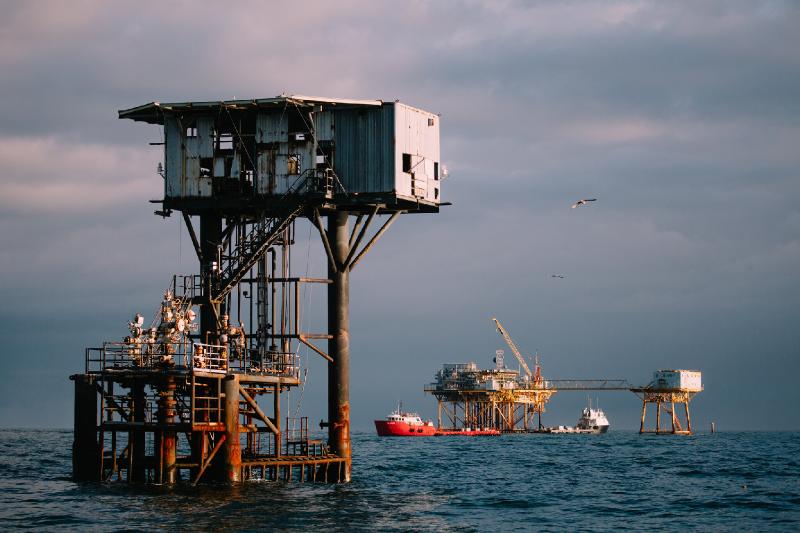Price to Plug Old Wells in Gulf of Mexico? $30 Billion, Study Says.


Ever since the first offshore platforms went up off Louisiana 85 years ago, the Gulf of Mexico has been an oil and gas juggernaut. But decades of drilling has left behind more than 14,000 old, unplugged wells at risk of springing dangerous leaks and spills that may cost more than $30 billion to plug, a new study has found . Nonproducing wells that haven’t been plugged now outnumber active wells in the gulf, the study says.
The researchers also found that, in federal waters, nearly 90 percent of the old wells were owned at some point in the past by giant oil companies known as the “supermajors,” including BP, Shell, Chevron and Exxon. Under federal law, that means those companies would still be responsible for cleanup costs, even though they might have sold the wells in the past, the study’s authors said.
Why It Matters
Oil and gas companies are responsible under federal and state rules for securely plugging wells that are no longer in service. In the boom-and-bust world of oil and gas drilling, though, operators frequently go bankrupt, leaving wells orphaned and unplugged, and taxpayers on the hook.
Orphaned oil and gas wells are a big issue onshore, too. “But offshore is a different beast, particularly in terms of the costs involved,” said Mark Agerton, an expert in energy economics at the University of California, Davis, who is one of the study’s authors. “The wells are bigger, and they’re just a lot more expensive. You can’t just drive a truck up to it.”
Possible Solutions
The $1 trillion infrastructure bill that President Biden signed into law in 2021 sets aside $4.7 billion to plug orphaned wells, both onshore and off. That’s a sizable sum, but not nearly enough to cover the backlog of orphaned wells.
Still, in federal waters, the government can hold prior owners of wells liable for plugging them, even if the current owners go under or otherwise don’t fulfill their cleanup obligations. Eighty-seven percent of wells under federal jurisdiction were once owned by one of the supermajors, many of which have recently booked record profits.
“So for federal waters, these companies with deep pockets would be on the hook,” Dr. Agerton said. “There’s someone to go after,”
It makes sense for public funds to prioritize plugging wells in state waters, where no such provision exists. Wells in state waters also tend to be in shallower locations, which make them cheaper to plug. Any pollution from wells closer to shore has a higher chance of reaching the shore and wreaking havoc with the coastal environment, making plugging those shallower wells more urgent.
The Bigger Picture
Even as the world starts to transition away from coal, oil and gas toward renewable energy, decades of mining and drilling in almost every corner of the world, including in oceans, have left behind the need for an immense plugging and cleanup effort.
In the gulf, the abandoned wells, platforms and pipelines have also become increasingly vulnerable to extreme weather linked to global warming. When Hurricane Ida hit the Louisiana coast with winds of nearly 150 miles an hour in August 2021, it set off a flurry of oil spills detectable from space .
The latest analysis focused on offshore wells, scrutinizing data on wells in the Gulf of Mexico, including those in federal offshore and state waters of Texas, Louisiana and Alabama. It was published Monday in the journal Nature Energy.
Tags
Who is online
46 visitors

What me worry? My great and great-great grandchildren can pay for the cleanup! They'll one and all remember us well.
With the GoP talking about capping spending - why don't they start by pulling subsidies from these fucking energy companies? Perhaps if they passed a few laws to hold CEOs and supervisors criminally accountable for spills and dragging their feet on cleanups when they do happen then maybe we can save a few more tax dollars.
This is something tax payers shouldn't be paying for when these companies are posting record profits year after year.
Why aren't corporations required to set aside a guarantee sum, appropriate for their risk?
As long as there's no problem, the corporation could take interest on that money.
"The $1 trillion infrastructure bill that President Biden signed into law in 2021 sets aside $4.7 billion to plug orphaned wells, both onshore and off. That’s a sizable sum, but not nearly enough to cover the backlog of orphaned wells."
It's doubtful the Biden administration will ever spend that money on its intended purpose.
Any info on how much of a "crisis" this is....how many wells aren't capped?
Probably more leakage is coming from natural seeps than any ot the wells.